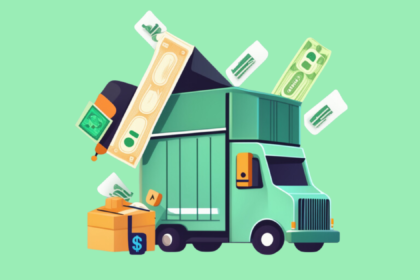What is more important for an e-commerce business than its customers? Happy customers!
Give them what they want, when they want, and exactly how they want it, and they’ll happily return for more in the future.
But messing up even one of those things can be a nightmare for your e-commerce business. Frustrated emails, bad reviews, and maybe even refund requests.
Wait, there’s more.
Research conducted by Ipsos and Octopia reveals a whopping 85% of shoppers won’t return to your platform again after a poor delivery experience.
All of this hassle can easily be prevented by strengthening one key aspect: e-commerce logistics. It goes beyond just shipping a product and ensures the right item reaches the right customer at the right time and in impeccable condition.
Sounds confusing? Let’s break it down for you.
What is E-commerce Logistics?
Most people associate e-commerce logistics with shipping products. If you’re in the same boat, it’s time to think again.
E-commerce logistics involves the entire process of getting your products from your warehouse to your customer’s doorstep—quickly, accurately, and cost-effectively. And sometimes back again (because, let’s face it, returns are inevitable).
But why does this matter? Because logistics are a big contributor to customer experience. The better the process, the happier the customer.
Look at giants like Amazon, for example. They’ve raised the bar with same-day or next-day shipping, real-time tracking, and hassle-free returns. As a result, customers not only prefer this convenience, but they expect it.
To deliver on your customers’ expectations and optimize logistics without breaking the bank, you need to ensure that inventory management, warehousing, order packing, and shipping all work in conjunction. Let’s understand them in detail:
1. Inventory Management
Inventory management involves tracking, storing, and maintaining enough stock to meet customer demand—without overstocking or running out.
Excess inventory is bad. It ties up your capital in unsold products. But so is understocking. You could be losing customers to competitors. In fact, a study by IHL Group found that retailers lose $1.77 trillion annually due to inventory distortion (the combined cost of overstocking and stockouts).
Effective inventory stocking helps you:
- Maintain sufficient stock
- Optimize storage costs
- Understand customer behavior and buying trends
- Predict future demand
Here are some simple tips for effective inventory management:
- Audit your stock regularly to ensure it matches your website listing.
- Maintain a two-week safety stock and set reorder points to avoid stockout (more on this later).
- Maintain clear communication with your supplier to avoid supply chain disruptions.
- Invest in good-quality inventory management software for real-time inventory tracking, demand, forecasting, and automated restocking.
2. E-commerce Warehousing
Warehousing involves storing and managing your products before they are shipped. New businesses with limited orders don’t typically need a warehouse. They can easily store their inventory at home or in a small space. But as their business grows over time and orders start to multiply, it might be better to rent a bigger warehouse.
You can use the warehouse to:
- Store Inventory
- Receive products from suppliers
- ship orders to customers or the next destination
- Receive and process returns
Warehousing logistics typically include three key components:
- Warehouse management: It involves organizing inventory, staff, and processes to ensure smooth operations.
- Warehouse operations: This covers everything from receiving products to shipping them out.
- Warehouse management system: It helps automate and optimize warehouse operations with real-time tracking, smart inventory placement, and workflow automation.
3. Order Packing and Shipping
Packing and shipping orders are the last steps of the e-commerce logistics process. You need to pick out the right product, pack it neatly, and ship it off. Sounds simple, right? But there’s a lot more that goes in.
You need to select a shipping carrier, print and apply shipping labels, pack fragile items carefully, and ensure the packaging is on-brand and cost-effective. Even a single error could lead to damaged products, costly returns, and unhappy customers—all of which hurt your bottom line.
This last step of the e-commerce logistics process is also a major cost center. A report published in the Strategic Management Journal suggests the order-picking process makes up 55% of the total warehousing cost.
To avoid this, make sure to:
- Keep a close eye on your fulfillment partner’s cost structure to avoid overpaying.
- Optimize packaging to reduce dimensional weight charges.
- Store inventory closer to key customer regions to reduce transit times and lower shipping costs.
Now that we know what makes up effective e-commerce logistics, let’s look at why inventory management matters to your bottom line.
Importance of Inventory Management
Effective inventory management is at the heart of e-commerce and logistics. Get it right, and you’ll have enough stock to meet demand without overloading your warehouse. Get it wrong, and you’re looking at stockouts, overstocking, higher storage costs, and frustrated customers who take their business elsewhere. Here are five key reasons why inventory management should be a priority for e-commerce businesses:
Maintain Sufficient Stock
Running out of stock at the wrong time can tank your sales, tarnish your brand reputation, and push customers to competitors. Effective inventory management helps ensure you always have the right amount of stock on hand—not too much that it ties up your cash flow and not too little that you miss out on sales.
A good way to do this is by setting a reorder point. It means assigning a minimum stock level at which you should reorder inventory to avoid stockouts. You can calculate it using the following formula:
Reorder Point = (Average Daily Sales × Lead Time) + Safety Stock
- Average daily sales refer to the average number of units sold per day.
- Lead time is the number of days it takes for your supplier to deliver new stock.
- Safety stock is the extra inventory to account for demand spikes or supply chain delays.
Let’s understand this with an example.
Say you sell smartwatches, and your average daily sales are 10 units. Your supplier takes 7 days to restock your inventory. You also maintain a safety stock of 20 units in case of unexpected demand surges.
Using the formula, your reorder point should be:
(10 × 7) + 20 = 90
This means that when your stock level drops to 90 units, it’s time to reorder.
This will help you maintain sufficient stock to prevent stockouts, overstocking, and last-minute restocking.
Better Demand Forecasting
Inventory sitting idle in your warehouse is dead money. But how do you know how much stock to keep on hand without overstocking or running out at the worst possible time? The answer lies in demand forecasting. It is a data-driven approach that helps you predict how much inventory you’ll need based on sales trends, market conditions, and historical data.
Effective demand forecasting can help you:
- Determine when and how much to restock
- Optimize your storage space by aligning inventory with demand
- Improve cash flow by investing in the right products at the right time
Businesses typically use four primary methods for demand forecasting:
- Trend Forecasting: This method analyzes past sales data to identify demand patterns over time. It helps you prepare for seasonal changes and shifts in customer preferences. For example, if your sales data shows that demand for a product spikes every winter, trend forecasting can help you stock up in advance to avoid missed opportunities.
- Graphical forecasting: This method uses visual representations like charts and graphs to help spot trends and demand shifts. It is more convenient if you want a quick, at-a-glance comparison of past and projected performance. You can easily plot your sales data to see gradual growth, sudden spikes, or declines in demand.
- Qualitative forecasting: If you’re entering a new market or launching a new product, you probably won’t have past data to make predictions. This is where qualitative forecasting comes in. It uses expert opinions, market research, customer surveys, and competitor analysis to predict the demand for your product.
- Quantitative forecasting: This method relies on mathematical models and statistical analysis to predict demand. It looks at past sales figures, economic trends, and real-time data to help you make data-driven inventory decisions. The quantitative forecasting method works best for products that have steady demand patterns and large data sets. The more data you have, the more accurate the predictions.
Optimize Storage Costs
Storing excess inventory might seem harmless—after all, having extra stock means you’re always ready to fulfil orders, right? But in reality, surplus inventory can drain your profits.
Many third-party logistics providers (3PLs) charge extra for long-term storage, often increasing fees for inventory that sits in their warehouses for more than 90 days. This can force businesses to adopt a lean inventory model and keep a low Days on Hand (DOH) to avoid unnecessary expenses. DOH is a simple metric that tells you how long your inventory will last, depending on your current sales rate.
Effective inventory management ensures you only store what you need—not excess stock that piles up your warehousing bills. Maintaining a low DOH can help you avoid high holding costs, freeing up capital for other business needs.
But there’s a catch.
If your DOH is too low, you risk stockouts and delayed shipments. The key, again, is striking the right balance. Here’s how you can do this:
- Use demand forecasting to predict how much stock you actually need.
- Adopt a just-in-time (JIT) inventory strategy, which involves ordering goods only when needed.
- Partner with a 3PL that offers flexible storage solutions.
Better Cash Flow
Ask any business owner worth their salt, and they’ll tell you the importance of cash flow in running a successful business. From paying suppliers on time and covering operating expenses to investing in growth opportunities like new products or marketing campaigns, steady cash flow is what keeps the wheels turning.
But not streamlining inventory management can tie up your cash in products with no immediate demand. Here’s how inventory management helps:
- It helps you forecast demand and order just the number of units that you can sell without overbuying.
- It lets you optimize your SKU to avoid stocking products with low turnover.
- By optimizing your stock levels, you can free up cash and reduce unnecessary expenses.
Greater Customer Satisfaction
Suppose a customer finds a product they love on your website, adds it to their cart, and checks out—only to receive an email later saying, “Sorry, this item is out of stock.” This is a stockout, and it frustrates customers. It might push them to your competitors, affecting your retention rates.
Not to mention the horrors of late delivery or receiving the wrong item—both of which can severely damage your brand’s reputation.
Remember, customers expect fast, accurate, and hassle-free deliveries. Any disruption could lead to negative reviews, increased return rates, and lost future sales.
Effective inventory management can help you prevent this by:
- Maintaining accurate stock levels by using real-time inventory tracking.
- Optimizing reorder points so you can restock before running out.
- Enhancing SKU management and warehouse organization to reduce picking and packing mistakes.
- Providing reliable shipping timelines to set the right customer expectations.
Components of an E-commerce Logistics Supply Chain
Now that we’ve established that e-commerce logistics involves a lot more than just moving products from point A to point B, let’s look at some major components that keep it running smoothly.
1. Sourcing Products from the Supplier
Every e-commerce logistics supply chain process begins with sourcing products from reliable suppliers. It is important to ensure a timely supply of high-quality products to keep your business rolling. Make sure to select the right supplier carefully, as it can impact your costs, product availability, and overall customer satisfaction. Here are some simple ways to optimize this step:
- Gauge the supplier’s reliability based on their reputation, delivery timeline, and product quality.
- When calculating the price of sourcing, go beyond the product cost and also factor in shipping fees, import duties, and storage costs.
- At the same time, look for bulk pricing and potential tariffs when selecting a supplier.
- Finally, don’t rely on a single supplier. Have backup options to avoid disruptions due to unexpected delays or sudden price hikes.
2. Warehousing and Inventory Management
A strong warehousing and inventory management system is key for efficient e-commerce logistics. It requires a strategic approach for placing inventory where it’s most accessible to reduce shipping times and costs.
Many businesses partner with 3PLs to optimize warehousing. These providers set up fulfillment centers in key locations, which helps speed up last-mile delivery. For example, an e-commerce brand using a multi-node fulfillment strategy can store inventory in warehouses close to high-demand areas, slashing shipping costs and transit times.
You can further use techniques like ABC analysis, demand forecasting, and just-in-time inventory to avoid stockouts and reduce holding costs.
3. Picking and Packing
Picking and packing might seem like simple tasks. If one thing goes wrong, you’re looking at shipping delays, incorrect orders, and frustrated customers. Any error in this stage can lead to wrong shipments, returns, and unnecessary expenses.
Here are some key things to keep in mind:
- Pick smart, not hard: Use batch picking, zone picking, or wave picking to speed things up and reduce mistakes.
- Label everything clearly: A missing or incorrect label can throw off the entire shipping process. Automate your barcodes, shipping labels, and invoices for greater accuracy.
- Pack with purpose: Your packaging should do two things—protect the product and keep shipping costs down. Using the right-sized boxes, for example, can help prevent and avoid unnecessary dimensional weight (DIM) fees.
- Double-check before sealing: A quick quality check before packing can go a long way in preventing costly mistakes. Wrong item? Broken piece? Catch it now instead of dealing with a return later.
- Make the most of tech: Warehouses are getting smarter. Leveraging the right tools can help you speed up fulfillment and reduce human error.
4. Shipping Orders
Once an order is packed, it needs to be shipped. But remember, your shipping process can make or break the customer experience, especially with rising expectations for fast and free delivery.
So, make sure to:
- Select a reliable shipping carrier
- Offer multiple options (standard, express, same-day)
- Optimize last-mile deliveries
5. Tracking
Customers want to know when their order is shipped, exactly where it is, and when it will arrive. This is where providing real-time tracking comes in. It lets them track the status of their orders independently without making a hundred calls to customer support.
You can further improve their experience by:
- Sending automated emails or messages to keep them informed about their order progress.
- Integrating tracking systems into their websites to let customers monitor shipments in real-time.
- Prioritizing proactive customer communication in case of lost or delayed packages to avoid negative reviews.
6. Returns Management
Returns are probably the least favorite word of e-commerce business owners. But they’re also inevitable. Therefore, it’s important to create a seamless reverse logistics process to make returns hassle-free and retain customers. This involves:
- Setting a clear return policy so customers know how to initiate returns and what conditions apply.
- Establishing processes for inspecting, restocking, and disposing of returned items.
- Deciding if you’ll offer free returns or charge customers based on return reasons.
7. Customer Support
No matter how seamless your logistics process is, issues can still arise. This is why it’s important to ensure seamless customer support.
Customers may have questions about their orders, or a package may get lost in transit. These issues must be addressed promptly to maintain customer trust. You can also provide support via live chat, chatbots, email, phone, and social media.
Remember, at the end of the day, logistics isn’t just about moving a product from your supplier to your customer. The end goal is to deliver a great customer experience while keeping operations smooth and costs low.
Key Challenges in E-commerce Logistics
E-commerce logistics, from a customer’s POV, is pretty straightforward—order placed, package shipped, and delivery made. But for businesses, it often comes with a whole complicated web of challenges that can make or break the entire operation. Here are some of the biggest hurdles for e-commerce in logistics and how you can navigate them:
1. Delivery Delays
Customers expect fast deliveries. They want their orders in hand within 24 to 48 hours. If you can’t meet that demand, they might take their business elsewhere.
However, ensuring such quick turnarounds is neither cheap nor easy. It requires a sophisticated logistics system, real-time inventory updates, and a workforce that can handle the pressure.
While big players can manage this demand with their own delivery networks, small e-commerce businesses usually struggle to keep up. To tackle this challenge, you can consider partnering with 3PLs or positioning your warehouse near key customer hubs to reduce delivery times.
2. Product Returns
Part of running an e-commerce business requires embracing returns and making the process hassle-free for customers. However, it doesn’t come without its challenges.
From managing reverse logistics and restocking returned items to minimizing fraudulent returns, you need a robust strategy to keep operations smooth and costs under control. But while some returns are unavoidable, you can take measures to minimize them.
For example, use high-quality product images, add detailed descriptions, and even offer virtual try-on tools to help customers buy the right product and reduce the chances of returns. That said, make sure to set up a smooth returns system so customers can initiate returns easily, track the process, and receive refunds or exchanges without unnecessary delays.
3. International Deliveries
Going international opens doors to a host of opportunities for your e-commerce businesses. But international deliveries can be a lot more complicated than domestic ones.
It doesn’t just involve delivering a simple package to a customer sitting across borders. You also need to navigate customs regulations, international shipping costs, currency conversions, and even potential delays due to logistical complexities.
This can be particularly difficult for small and mid-sized businesses, who often struggle with negotiating favorable shipping rates and navigating import/export duties.
However, you can overcome this by partnering with a fulfillment company experienced in global logistics. They handle customs documentation, offer competitive shipping rates, and ensure faster, hassle-free deliveries, helping you expand your reach without logistical headaches.
What are the Latest Trends in e-commerce Logistics?
From technology to customer expectations, there are a lot of trends redefining e-commerce logistics for modern businesses. As supply chains become more complex, it’s important to stay on top of these trends for better efficiency, lower costs, and happier customers. Let’s look at some key trends in e-commerce logistics:
1. Drone Deliveries
Drones, today, aren’t limited to sci-fi movies. They are bringing the future closer than you think. They can deliver products to your customers’ doorsteps within minutes—no traffic jams, no long waits. They can even reach remote areas where traditional couriers struggle. Plus, they’re more sustainable, cutting down on fuel emissions.
In fact, retail giants like Amazon and Walmart are already testing drone technology to fulfill last-mile deliveries. While there are still roadblocks like government regulations, air traffic control, and payload limits, drone deliveries could soon become a reality as technology advances.
2. Green Logistics
Customers today not only prefer buying sustainable products but also prefer supporting businesses with eco-friendly practices. And when it comes to e-commerce businesses, the logistics process is often the biggest contributor to their carbon footprint. From transportation emissions to excessive packaging waste, every step in the supply chain affects the environment.
Green logistics is an emerging trend that helps make the e-commerce supply chain more environmentally friendly by reducing carbon emissions, minimizing waste, and optimizing resource usage. How? With the help of sustainable packaging, energy-efficient warehouses, and eco-friendly transportation methods.
3. Artificial Intelligence and Machine Learning
AI and ML are redefining businesses across industries, including e-commerce. AI-powered systems can predict demand, optimize routes, and even automate warehouse operations, eliminating reliance on manual processes and gut instincts.
For example, AI-driven demand forecasting helps businesses stock up on the right products at the right time. AI-powered chatbots can help you enhance customer support, giving your team more time to focus on more complex tasks. Similarly, ML algorithms can help improve delivery routes in real time, avoiding delays and reducing fuel costs.
Wrapping Up
Efficient e-commerce logistics involves a strategic approach to inventory management, warehousing, order packing, and shipping. To retain a competitive edge and keep your customers happy, you need to balance speed, efficiency, customer satisfaction, and cost optimization.
You can easily do this by using technology and streamlining post-purchase experiences. This is where tools like LateShipment.com come in.
It is the world’s only cloud-based post-purchase excellence platform, helping e-commerce businesses create seamless order delivery experiences, reduce shipping costs by up to 20%, and retain up to 40% of revenue from returns!
With LateShipment.com, you get:
- Delivery Experience Management: Reduce WISMO (Where Is My Order) inquiries by 72% with automated shipping notifications, self-serve order lookup, smart incident alerts, and proactive issue resolution.
- Returns Experience Management: Streamline e-commerce returns with a self-guided branded return portal, instantly downloadable return labels, and policy enforcement, helping you retain up to 40% of revenue from returns.
- Shipping Insurance: Protect your parcels with a 99% claim success rate using fully customizable, automated shipping insurance.
- Automated Parcel Audit and Refunds: Get your money back with automated shipping invoice audits, refund recovery, and expert claims redressal, reducing shipping costs by 20%.
The best part? LateShipment.com integrates effortlessly with 1,200+ shipping carriers and platforms, including FedEx, UPS, Canpar Express, Klaviyo, Gorgias, Attentive, Shippo, Salesforce, and more.
So what are you waiting for? Enhance your customers’ post-purchase experience and cut down logistics costs. Try LateShipment.com today!





